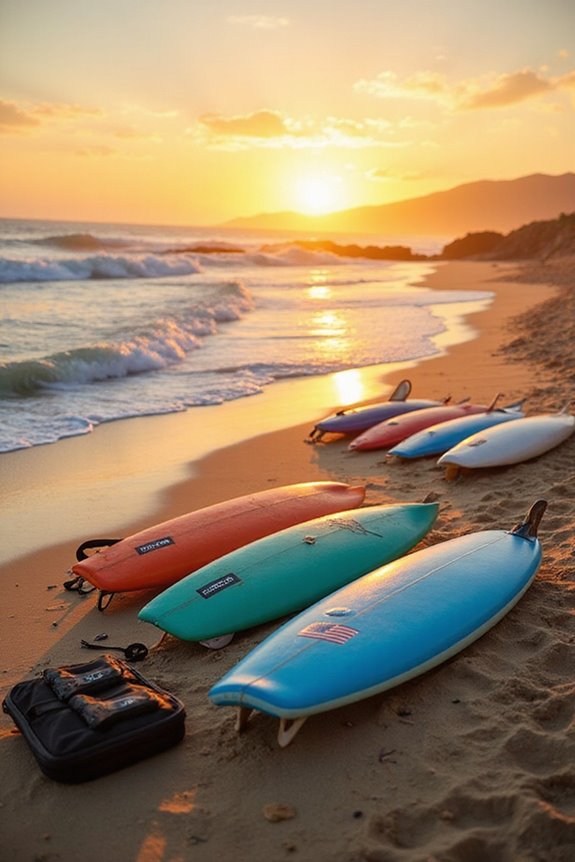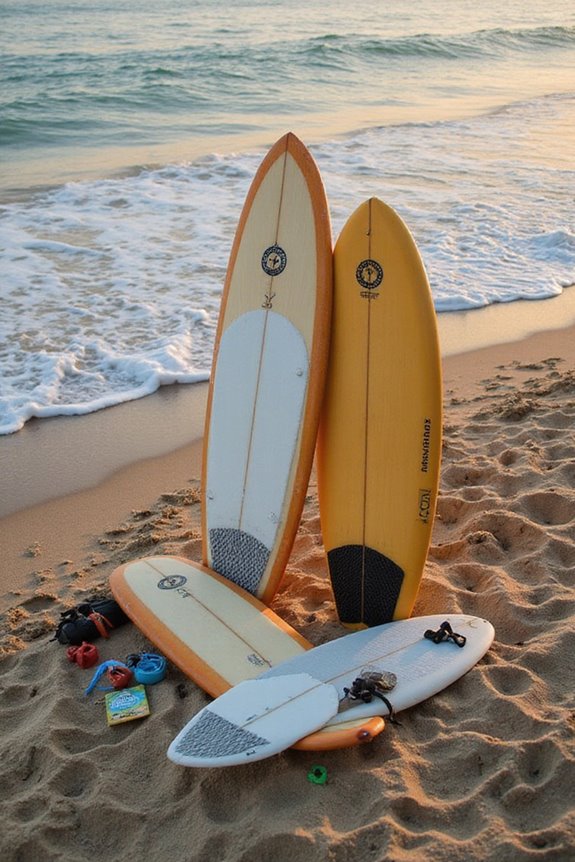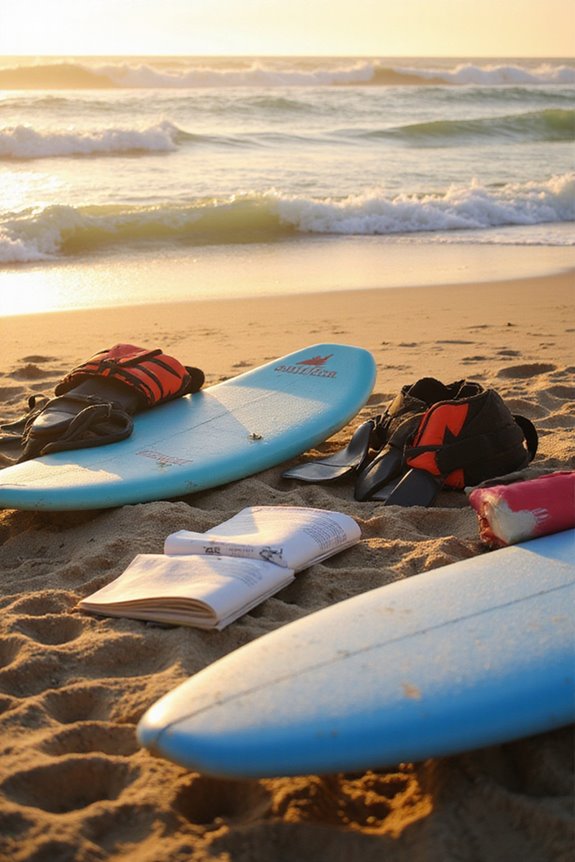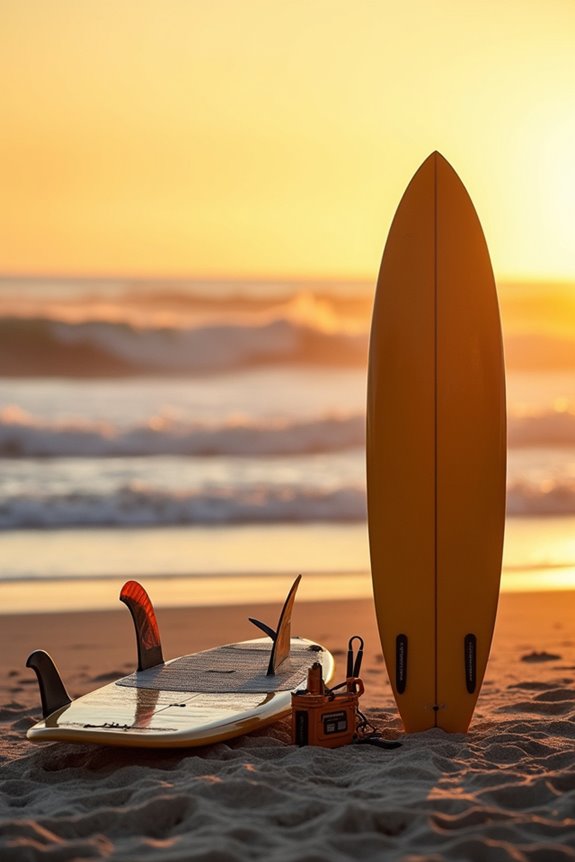To handle surfing with a language barrier, we should focus on clear communication and basic surfing lingo. Familiarize ourselves with key terms like “barrel,” “break,” and “set.” Using hand signals, body language, and visual alerts can help convey our intentions. Also, learning local customs and engaging in community activities fosters connections. Utilizing translation apps or bilingual instructors can aid understanding. By implementing these strategies, we can ease communication challenges in the surfing environment, and there’s more to explore on this topic.
Key Takeaways
- Learn basic surfing slang to improve communication with fellow surfers and enhance your experience in the water.
- Use hand signals and body language to convey intentions, ensuring safety and understanding among surfers.
- Incorporate visual aids like diagrams to explain surf techniques and minimize confusion.
- Utilize translation apps for real-time communication and to bridge language gaps effectively.
- Engage with local surf culture and customs to foster connections and demonstrate respect for the community.
Understanding Surfing Lingo
When we plunge into the world of surfing, it’s essential to grasp the specific language that surfers use. Familiarizing ourselves with surfing slang and wave terminology helps us connect with other surfers and enhances our overall experience.
Key terms include:
- Barrel: A hollow wave where surfers ride inside, often seen as a peak achievement.
- Break: The location where waves crash and break consistently.
- Face: The smooth, steep part of the wave where we ride.
- Set: A series of waves arriving in a pattern.
Additionally, understanding surfing apparel essentials can contribute to a more enjoyable experience on the waves.
Overcoming Communication Challenges

To effectively navigate the surf environment, we need to employ a variety of strategies that help bridge communication gaps. Gesture recognition is essential; using simple hand signals, like pointing or thumbs-up, can convey intentions clearly. Recognizable surf signals, such as “go” or “wait,” enhance coordination in the lineup.
Body language also plays a significant role. Our positioning on the board and timing when paddling can serve as implicit cues. When verbal communication fails, visual alerts, like waving or raising hands, are imperative for indicating dangers or upcoming waves. Developing a shared set of signals fosters safety and understanding. By focusing on these nonverbal techniques, we can create a more inclusive surfing experience, regardless of language barriers. Additionally, being aware of local surf etiquette can enhance mutual respect among surfers and improve overall communication.
Embracing Cultural Sensitivity
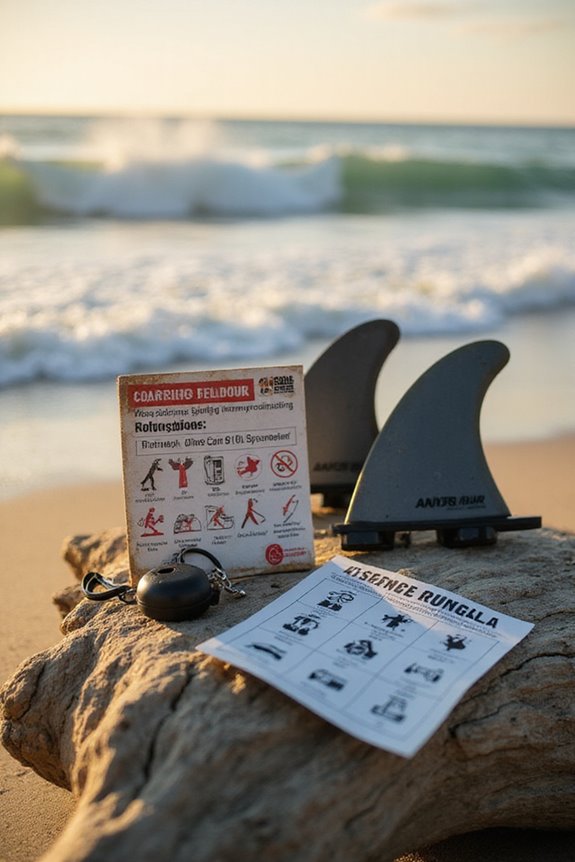
As we engage in surfing communities around the world, it is vital to recognize the unique cultural traditions and values that shape each locale. Understanding local cultural norms, such as gender roles and community identity, is essential for respectful participation. For example, some cultures may have traditional views on women in surfing, which can influence interactions in the water.
We should also appreciate local aesthetics in signage and behavior, as they signal community identity. By respecting these customs and engaging with local environmental initiatives, we not only align ourselves with cultural expectations but also strengthen our connection to the area. This awareness fosters positive relationships and enhances our overall surfing experience while honoring the local community. Additionally, being aware of local surf culture helps in navigating social interactions and fostering camaraderie among surfers.
Practical Strategies for Effective Communication
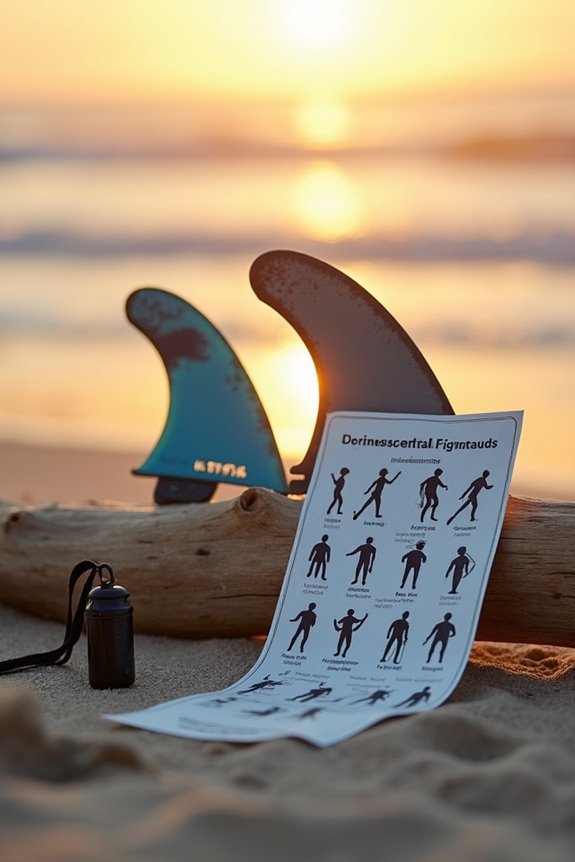
Effective communication is essential for overcoming language barriers in surfing environments, especially when we want to engage with diverse communities. To enhance understanding, we should use simple and clear language, avoiding idioms and jargon. It’s helpful to repeat key phrases and use consistent terminology.
Incorporating visual aids like infographics, diagrams, and videos can greatly support comprehension. Universal symbols and color coding can convey messages intuitively.
We can also learn basic phrases related to surfing and practice active listening. Observing nonverbal cues, such as gestures and facial expressions, helps us grasp intent. Finally, utilizing translation apps or enlisting bilingual instructors can bridge communication gaps effectively, ensuring everyone feels included and understood. Additionally, understanding ocean dynamics is crucial for successful surfing, as it helps all participants navigate the waves more effectively.
Adaptive Surfing and Sensory Considerations
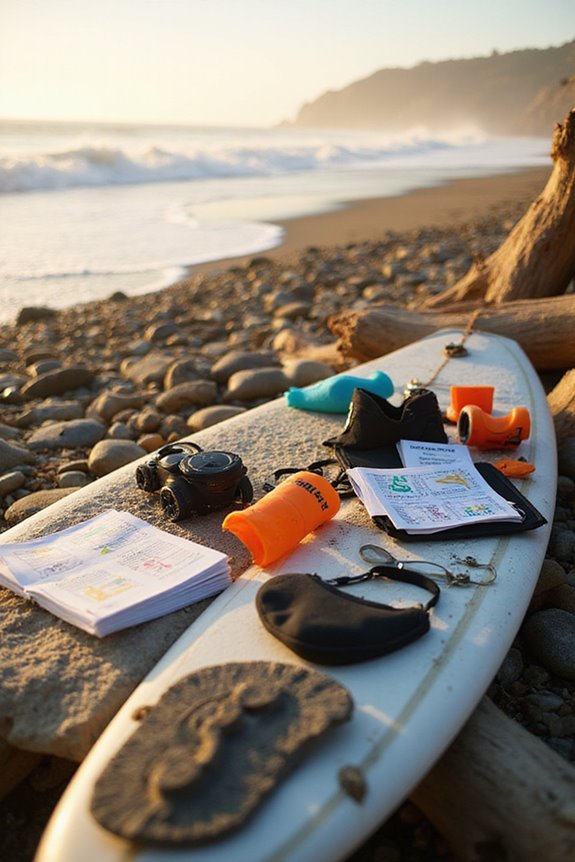
While engaging in adaptive surfing, we must recognize the unique sensory experiences that can considerably impact individuals with sensory processing challenges. The multi-sensory stimulation from the ocean—such as tactile water sensations, the sound of waves, and the smell of salt air—enhances sensory integration.
To support these individuals, we can implement adaptive techniques like:
- Using sensory aids: Tight wetsuits can provide calming deep pressure.
- Adjusting surfing intensity: Tailoring the experience to reduce overstimulation.
- Positioning on the board: Modifying stance based on comfort levels.
Additionally, incorporating quality surfboards can significantly enhance the overall surfing experience by providing better performance and maneuverability on waves.
Utilizing Technology for Language Support
In today’s world, we can leverage technology to bridge language gaps, especially in activities like surfing where communication is essential. AI translation tools are invaluable, offering real-time multilingual responses and enabling seamless conversations. Mobile apps, with voice recognition features, let us translate spoken language on the go, making hands-free communication easier.
Visual aids such as diagrams, images, and videos can help convey complex surf techniques, while phrasebooks tailored to surfing etiquette enhance our understanding. Additionally, interpreter services available through digital platforms provide on-demand, culturally sensitive support during lessons or emergencies. Combining these technologies guarantees we can navigate local surf environments confidently, despite language barriers, enhancing our overall experience. Furthermore, understanding safety protocols is crucial to ensure a secure learning environment while surfing.
Building Community Through Shared Experiences
Creating a sense of community through shared experiences, like surfing, helps us connect with others, regardless of language differences. When we engage in shared activities, we foster community bonding that transcends words. Surfing offers a neutral ground where nonverbal communication thrives, allowing us to understand each other through gestures and expressions.
Participating in group surfing sessions encourages trust and camaraderie. As we tackle the challenges of mastering surfing skills, we learn empathy and cooperation. This shared journey reduces social hierarchies, making everyone feel valued, regardless of their linguistic background. Ultimately, embracing these communal experiences enhances our sense of belonging, promoting inclusivity and respect within our diverse community.
Frequently Asked Questions
What Are Common Surfing Etiquette Rules to Know?
In the ocean’s dance, we ride the waves together, respecting wave priority and sharing waves. By observing and communicating, we create harmony, ensuring everyone enjoys the surf while fostering a welcoming community for all.
How Can I Find Local Surf Instructors Who Speak My Language?
We can find local surf schools by exploring language exchange platforms or asking in expat communities. Many schools list instructors’ languages, making it easier for us to connect with the right surf instructor for our needs.
What Are the Best Surf Spots for Beginners?
While some surf locations promise thrilling waves, others offer gentle swells perfect for beginners. Let’s explore beginner tips at spots like Byron Bay and Muizenberg, ensuring we find our footing in the water together.
How Do I Choose the Right Surfboard for My Skill Level?
When choosing the right surfboard for our skill progression, we should consider surfboard types. Beginners benefit from longboards for stability, while intermediates might prefer mid-lengths. Advanced surfers often opt for shortboards to enhance maneuverability and speed.
What Should I Pack for a Day of Surfing?
What’s a surf day without the right gear? Let’s pack our surfboard accessories, grab various sunscreen options, and don’t forget our wetsuits. With these essentials, we’re set for an unforgettable day riding the waves!

